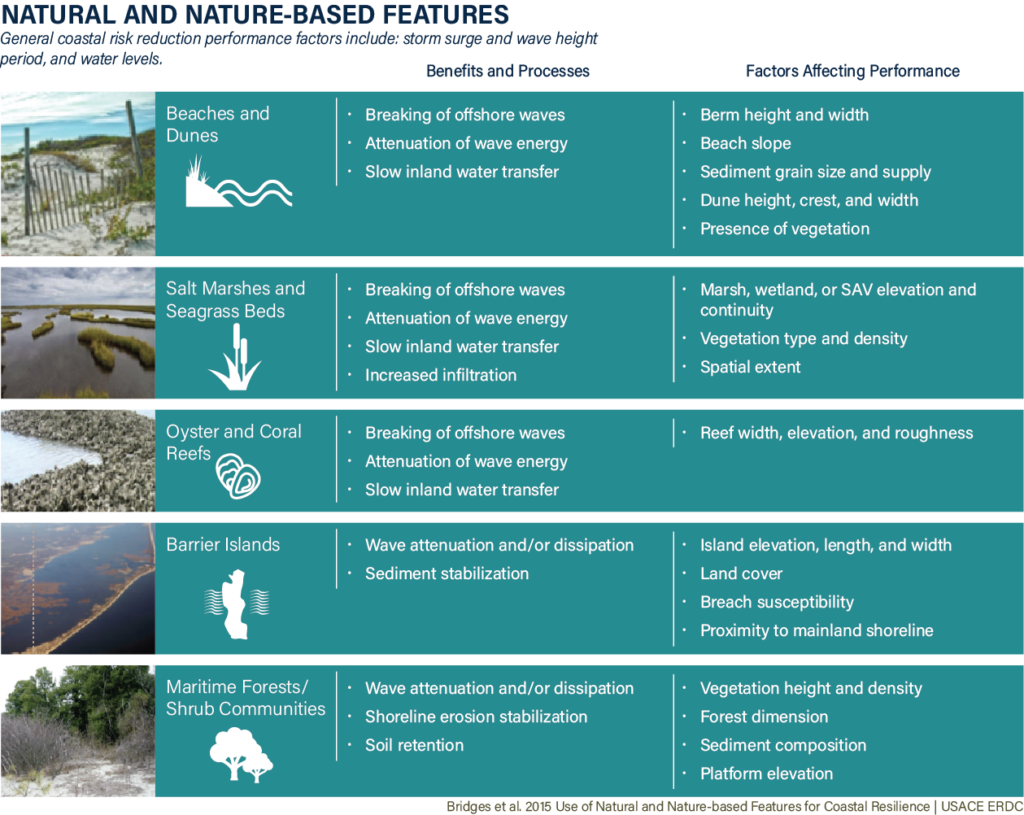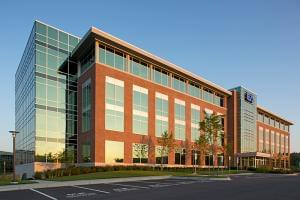Nature-based solutions can be a viable and often preferred alternative over static engineered installations when improving coastal resilience and addressing the impacts of climate change. In general, nature-based solutions are defined as strategies that work with nature or employ/replicate natural features and processes to sustainably address societal changes and benefit humanity, biodiversity, and ecosystems. Examples of nature-based solutions in the coastal realm are varied and capable of application over expansive areas. The U.S. Army Corps of Engineer’s Engineering With Nature® program defines a few examples in the following manner:

Research, recognition, and implementation of nature-based solutions have increased concurrently to greater acceptance as to the impacts from climate change among the greater scientific and engineering communities; however, successful implementation of nature-based solutions requires a combined understanding of non-stationarity as well as natural ecosystem function. Engineers and scientists will need to work together throughout the design lifecycle—a critical difference from traditional coastal resilience approaches that rely on static engineered infrastructure, to understanding and recognizing the need for these healthy ecosystems.
As opposed to static infrastructure that does not adjust within the changing coastal environment, use of nature-based solutions as a resilient means to address the challenges of sea-level rise can have the potential to provide additional value, including:
- Habitat improvements
- Improved community well-being
- Improved aesthetics
- Reduced impacts from certain weather events
- Carbon sequestration
A specific ecotype that is particularly vulnerable to the impacts of climate change includes coastal marsh and intertidal habitats, which do not always have the ability to keep up with the pace of sea-level rise. Without intervention, this habitat will likely be lost—especially in areas where lateral migration of habitat is not possible, such as urban areas. Watch EA’s Environmental Insights webinar on the topic followed by a brief summary.
Many policy and planning level documents espouse the benefit in using sediment placement as a nature-based solution to improve coastal resilience. The U.S. Army Corps of Engineers set a goal of reusing 70% of sediments derived from navigational improvements for beneficial reuse by 2030, an increase of between 20 and 40% of current reuse. State and local governments are also seeing the value in beneficially using sediment from within the watershed of its origin.
For sediment placement, projects must be initiated based on the need to promote ecological function and flood protective features instead of a need to find a location to offload dredge sediment. However, like most nature-based solutions, there is no definitive approach or process that can be used across different regions. While there is no definitive process yet in place, there are a number of sediment/dredged material placement strategies currently being employed to provide a variety of ecological lift and protective functions including:
- Dynamic revetment
- Thin layer placement
- Horizontal levees
- Mud motors
The federal government continues to support the refining of definitions and regulations while creating resources, all of which will inform state, regional, municipal, and site-specific strategies. Extensive funding is currently designated for nature-based solutions through the Federal Emergency Management Agency, U.S. Environmental Protection Agency, Department of Defense, and many other agencies.
Next Steps
There is still much to be learned, and the engineering and scientific communities will need to continue to come together to address these knowledge gaps. Focus areas will range from constructability and regulatory challenges to grain size and turbidity.
For example, the use of more coarse, grain-sized material may minimize the presence of possible contaminants, minimize dewatering and other geotechnical issues, and limit impacts to surrounding receptors from suspended solids. Regulations will need to shift to design-forward thinking to account for non-stationarity and predictive/dynamic models rather than existing standards that look backwards and use definitions such as the 100-year storm event.
 For more information on using sediment placement as a nature-based solution to improve resiliency, please contact:
For more information on using sediment placement as a nature-based solution to improve resiliency, please contact:
Sam Whitin, CERP, Director, Coastal Resilience
401-287-0375
Contact Us
